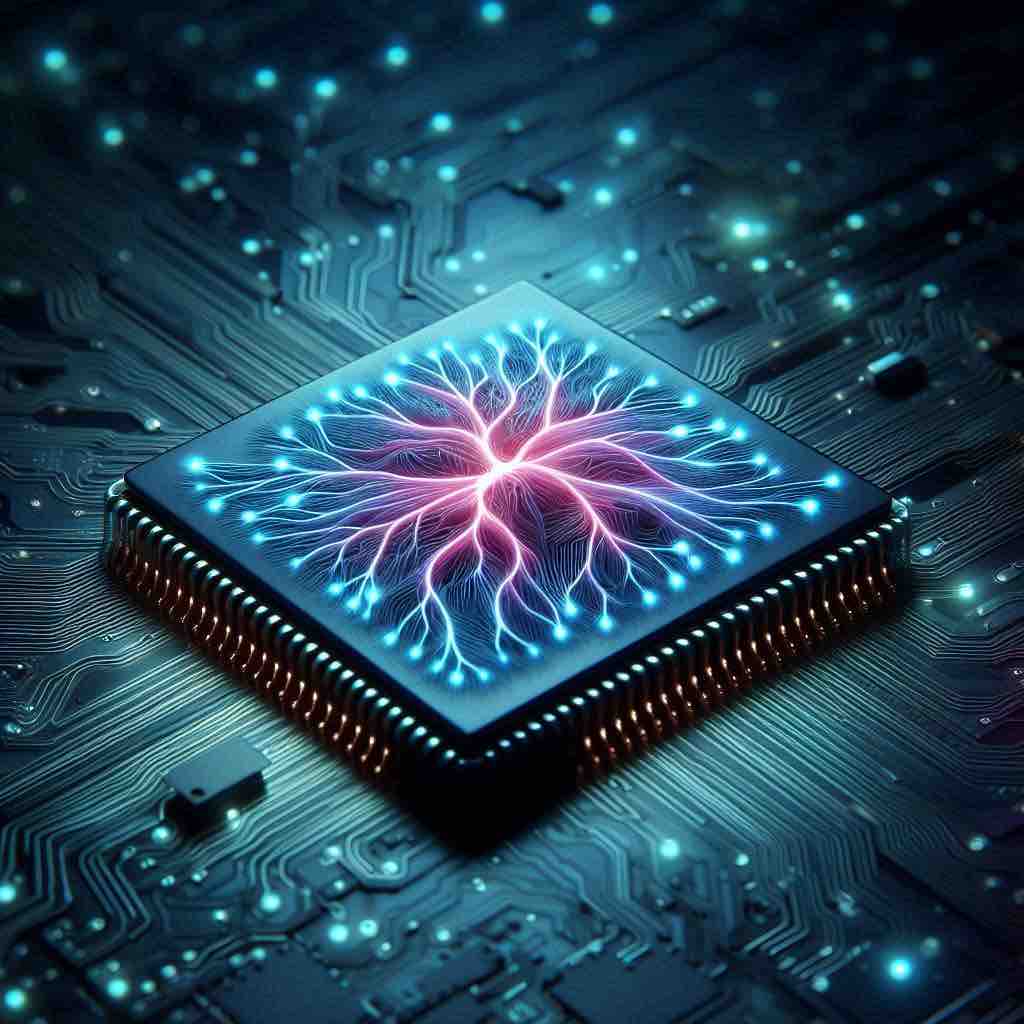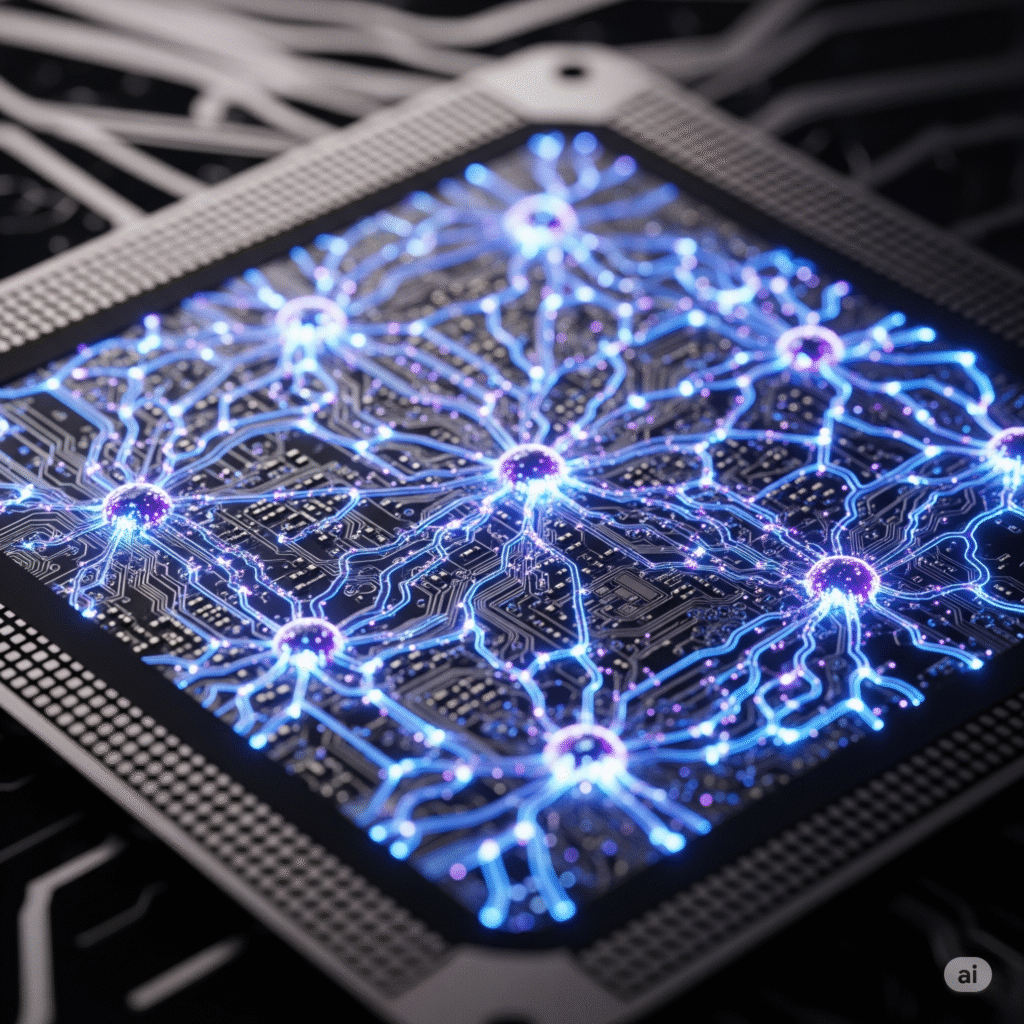Introduction
Artificial intelligence is evolving fast—but it still struggles to match the efficiency and adaptability of the human brain. Enter neuromorphic computing, a new frontier in hardware design that aims to close that gap. In 2025, neuromorphic chips are pushing AI into faster, more energy-efficient, and even more brain-like territory.
Let’s dive into what these chips are, how they work, and why they might just power the future of intelligent machines.

What Are Neuromorphic Chips?
Neuromorphic chips are processors designed to emulate the way the human brain works, using neurons and synapses instead of traditional logic gates. Unlike standard CPUs or GPUs, which process data in serial or parallel, these chips work in massively parallel, event-driven ways, mimicking biological neural networks.
They operate using spiking neural networks (SNNs)—networks that fire only when a certain threshold is met, saving energy and increasing responsiveness. To learn more about this foundational technology, check out our guide on Spiking Neural Networks.


Why Neuromorphic Chips Matter in 2025
Here’s what makes them a game-changer in 2025:
- Energy Efficiency: Traditional AI models consume huge amounts of power. Neuromorphic chips can reduce power usage by up to 100x on specific tasks, a crucial factor as AI scales.
- Real-time Learning: Unlike conventional chips that need extensive training beforehand, neuromorphic systems can adapt on the fly, like brains do. This enables machines to learn directly from their environment without relying on massive, pre-labeled datasets.
- Compact Intelligence: These chips enable powerful AI to run locally on edge devices (like drones, wearables, or robots), eliminating the need for constant cloud access and improving privacy and security.
Who’s Leading the Neuromorphic Revolution?
Several research labs and tech companies are pioneering this advanced hardware:
- Intel’s Loihi 2: A powerful second-generation neuromorphic chip that processes data using spiking neurons. It’s now used in robotics, sensory processing, and pattern recognition research.
- IBM’s TrueNorth: One of the first neuromorphic chips, it paved the way for real-time, ultra-low power vision, audio, and motion applications. While no longer the focus, its legacy continues to influence projects like IBM’s NorthPole chip.
- BrainChip’s Akida: A commercially available neuromorphic chip designed for edge AI. It is being used in smart homes, industrial automation, and autonomous vehicles, showcasing the technology’s real-world viability.
Real-World Applications of Neuromorphic Computing
Neuromorphic chips are no longer just in research labs. In 2025, they’re being applied in a growing range of fields:
- Autonomous Robots: Robots that need to process visual, tactile, and auditory data in real-time, without relying on slow cloud connections.
- Medical Devices: Brain-inspired chips help detect seizures, monitor heart conditions, and can even be used in advanced neural implants due to their low power draw and efficiency.
- Cybersecurity: The pattern recognition capabilities of SNNs are used to identify anomalies and detect intrusions or malware faster than traditional, signature-based systems.
Challenges to Overcome
Despite their promise, neuromorphic computing faces challenges:
- Programming Complexity: Writing software for SNNs is fundamentally different from traditional coding. This steep learning curve remains a barrier to broader adoption.
- Hardware Compatibility: Neuromorphic systems require new infrastructure and design tools, which slows down development cycles and integration into existing tech stacks.
- Limited General-Purpose Use: These chips excel at specific tasks but aren’t yet suited for broad, general AI functions. Research is underway to expand their capabilities.
Looking Ahead: The Future of AI Hardware
By 2030, neuromorphic computing could become the standard for on-device AI, powering phones, wearables, and drones with real-time intelligence. Combined with brain-computer interfaces (BCIs) and next-gen robotics, these chips could help machines truly think and interact in human-like ways.
Summary
Neuromorphic chips aren’t just the next step in computing—they represent a whole new direction. By mimicking the brain’s structure and function, they offer a glimpse into an era where AI becomes not just powerful, but efficient, adaptive, and profoundly intelligent.
For more articles in our “Science in Daily Life” series, explore our blog.
In a world chasing ever-larger models, neuromorphic chips ask a different question: What if smaller, brain-inspired machines were the smarter path forward? We’d love to hear your thoughts on this topic in the comments below!
One-Week Trip Itinerary to Dharamshala & Nearby Attractions
Introduction Spending…
3-Day Trip Itinerary to Dharamshala & McLeod Ganj
Introduction: Planning…
Explore Local Markets in Dharamshala – A Shopper’s Paradise
Introduction: Local…
Best Restaurants in Dharamshala – A Food Lover’s Guide
Introduction Dharamshala…
Temples in Dharamshala – Spiritual Gems of the Himalayas
Introduction Dharamshala,…
Discover the Best Cafés in Dharamshala
☕ Cafés…









